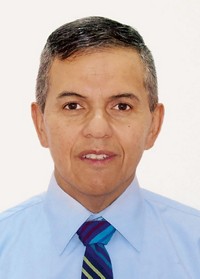Advertisement
Grab your lab coat. Let's get started
Welcome!
Welcome!
Create an account below to get 6 C&EN articles per month, receive newsletters and more - all free.
It seems this is your first time logging in online. Please enter the following information to continue.
As an ACS member you automatically get access to this site. All we need is few more details to create your reading experience.
Not you? Sign in with a different account.
Not you? Sign in with a different account.
ERROR 1
ERROR 1
ERROR 2
ERROR 2
ERROR 2
ERROR 2
ERROR 2
Password and Confirm password must match.
If you have an ACS member number, please enter it here so we can link this account to your membership. (optional)
ERROR 2
ACS values your privacy. By submitting your information, you are gaining access to C&EN and subscribing to our weekly newsletter. We use the information you provide to make your reading experience better, and we will never sell your data to third party members.
Careers
Revising The ACS Guidelines For Bachelor’s Degree Programs
by Anne B. McCoy , Ron C. Estler
September 24, 2012
| A version of this story appeared in
Volume 90, Issue 39

For the past 75 years, the American Chemical Society has operated an approval program for bachelor’s degree programs in chemistry. Leading chemists from the top chemistry graduate programs initiated the ACS approval program to promote excellence in the education and training of chemists at the undergraduate level. ACS established the Committee on Professional Training (CPT) to administer the ACS approval program. Currently, 669 undergraduate chemistry programs are ACS approved. The designation allows the chairs of these programs to certify that graduates have met the curricular requirements defined by the ACS Guidelines for Bachelor’s Degree Programs.
The ACS guidelines promote excellence in the preparation of undergraduates by providing minimum requirements for department infrastructure and curricular requirements for the certified major. The current guidelines, which were released in 2008, can be viewed at www.acs.org/guidelines. During the revision process that led to the 2008 guidelines, CPT revisited the requirements for a certified major. The review resulted in significant changes in the curriculum to reflect the increasingly interdisciplinary nature of chemistry.
Under the 2008 guidelines, students must be exposed to five chemistry subdisciplines—analytical, biochemistry, inorganic, organic, and physical chemistry—through a foundational experience. In addition, students must take four in-depth courses that build on the foundational course work. Students must also take 400 hours of laboratory work beyond general chemistry, and that lab work should include significant exposure to at least four of the five chemistry subdisciplines. Within these constraints, individual departments determine the specific courses required for the certified major.

In addition to providing chemistry programs with flexibility in the details of the curriculum, the 2008 guidelines introduced an increased emphasis on student skills in areas as varied as communications, teamwork, professional ethics, safety, and utilization of information resources.
In January 2012, CPT embarked on an evaluation of the impact of the 2008 guidelines. We began this process during our meeting in January and have continued internal discussions throughout the spring and summer. As part of the process of self-evaluation, we conducted a survey of department chairs at ACS-approved programs, requesting feedback on how they have responded to various aspects of the 2008 guidelines. The survey addressed many components of the guidelines, including issues of staffing, curriculum, student skills, undergraduate research, and online courses and virtual laboratory experiences. We are analyzing the responses, and the following are two of our initial findings:
◾ Approximately 85% of responding departments reported making some changes as a result of the 2008 guidelines. The most common changes involved redistribution of lab coverage, introduction of new pedagogies, introduction of new degree tracks, introduction of new courses, or changes in the course requirements for certification.
◾ The ACS guidelines require the equivalent of only one semester of exposure to organic and physical chemistry. When asked if they had replaced or are planning to replace the two-semester sequences in either of these areas with a one-semester comprehensive foundational course, only 5% of the responding departments indicated that they were making such a change to the physical chemistry requirements. A similar number of responding departments indicated that they were introducing a one-semester course in organic chemistry.
We expect that this self-evaluation will result in a new edition of the guidelines that will be adopted in 2014. Given the significant changes introduced by the 2008 guidelines, we do not anticipate that this revision will be major. We anticipate that the 2014 version will primarily incorporate modifications to improve clarity and resolve issues that have come to our attention through the process of program review.
We value input from the community in this process. If you have comments or ideas that you would like to share with the committee, please e-mail them to cpt@acs.org. Forums for discussion of the revision will include open meetings at upcoming ACS national meetings and a symposium sponsored by the ACS Division of Chemical Education at the spring 2013 ACS national meeting in New Orleans.
Views expressed on this page are those of the authors and not necessarily those of ACS.





Join the conversation
Contact the reporter
Submit a Letter to the Editor for publication
Engage with us on Twitter